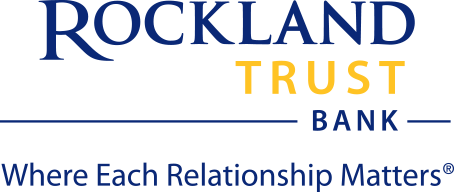Written by Steve Andrews

On the Up and Up
Despite another lull in the stock market rally that began last October, we don’t see this as the start of some bear market. Economic growth is improving, with Q2 GDP rising to 2.4% from 2.0% in Q1, and some early estimates of current (Q3) GDP growth exceeding 4.0%.
The US economy has added 3.36 million jobs over the past 12 months and the unemployment rate fell back near historical lows (3.5%) in July, while the broader U-6 unemployment rate, which includes those working part-time who would prefer full time jobs, fell to 6.6% (it averaged 7.0% in the five years prior to COVID). Meanwhile, the labor force participation rate remained unchanged at 62.6%. One downside to better-than-expected growth is that it has investors worried that the Fed will delay any thoughts of lowering rates any time soon.
Taking a Look Back
Six months ago, when recession fever was rampant, the Fed Funds futures market had priced in the expectation that the Fed would cut short-term interest rates by a half-point (0.50%) by December. Those expectations changed as investors began to shift their sentiment away from one where a recession was all but assured, to one where the majority believe we could avoid one. Today, the futures market has priced in a full point (1.00%) in rate cuts by the Fed by the end of 2024.
Slowing Inflation
July consumer prices (CPI) were up 3.2% from a year ago. However over the past 3 months, CPI has been running at just a 1.9% annual rate – the slowest rise in prices since early 2020. Housing costs (shelter) are keeping CPI elevated, as they have all year, accounting for 70% of the July increase, but they are slowly moderating.
Meanwhile, producer prices (PPI) for goods used in the production process are improving even faster, up just 0.8% from July 2022 (compared with their 11.7% peak back in March 2022), and this trend should continue if prices further down the production pipeline are any indication. Prices for intermediate processed goods fell 0.6% in July, and are down 7.8% in the past year, while cost for unprocessed (raw) goods rose 1.7% in July but are down 24.9% from year-ago levels.
One more ingredient that helps tamp down inflation is productivity, so it was welcome news that US nonfarm productivity rose 3.7% (annualized) in the second quarter - the best showing in nearly three years – but despite the Q2 gain, productivity is up just 1.3% from a year ago.
Growth by Sector
The services sector continues to propel economic growth. The largest sector of the US economy has expanded in 37 of the last 38 months, with two key drivers of continued growth, new orders and business activity, running well above the “50” mark that signifies expansion, at 55 and 57.1, respectively, according to ISM statistics for July. Meanwhile, manufacturing continues to languish as US consumers still prefer to direct their spending more toward services than the goods they devoured while being shut-in during the COVID epidemic. Maybe the worst is over as the ISM manufacturing index edged up to 46.4 in July from 46.0 in June.
The US housing sector continues to recover. After the biggest surge in housing starts in 23 years in May, the starts rate edged back a bit in June but, despite the pullback, the number of homes under construction remains near the highest level going back to the early 1970’s, which is boosting homebuilder sentiment and keeping them busy. Single-family construction made up 65% of June housing starts. There are currently 1.68 million total units under construction right now – just below the record pace of 1.71 million set last October. This helped lift US construction spending to a new record high in June - up 3.5% from a year ago – along with US homebuilder confidence which has now improved for seven months in a row and sits at the highest level since June 2022 when things really began to turn sour.
The Silver Lining of Interest Rates
Long-term interest rates have been on the rise for weeks and, as the yield on the 10-year US Treasury Note edges closer to last October’s 4.30% peak, it becomes disconcerting to some, but higher yields for Treasury Inflation Protected Securities (TIPS) point to some optimism. Yields on TIPS fall when investors are worried about inflation. They buy TIPS for inflation protection, which drives TIPS prices higher and, thus, drives yields lower. The opposite happens when inflation fears recede. This recent development is a positive as higher real (after inflation) interest rates suggest that investment is increasing which should further boost productivity, which, in turn, should boost economic growth and continued disinflation.
In Conclusion
The Fed’s next FOMC meeting on the economy and rates will happen in late September. By that time, the Fed will have another round of inflation and employment reports to peruse as they ponder when the appropriate time is to pivot US monetary policy from interest rate hikes, to the first rate cuts. Some prominent FOMC members, like NY Fed President John Williams, feel like disinflation has already progressed to the point that the Fed could act to lower rates sooner rather than later in order to keep rates from becoming too restrictive. We shall see.





